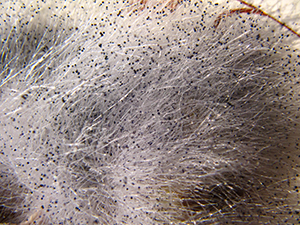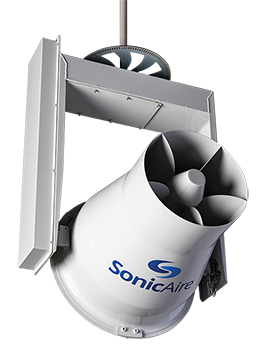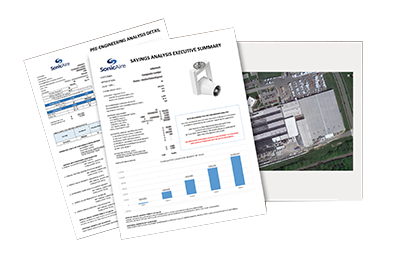Roughly 5 billion pounds of linens are laundered in health care settings each year in the United States. To prevent the spread of pathogens, these health care textiles (HCTs) must be properly managed throughout the cleaning and storage cycles.When appropriate measures are not in place, outbreaks can occur.
Case in point: In 2015, an outbreak of Rhizopus spp. infections occurred in a Hong Kong hospital. Investigation into the outbreak revealed “excessive levels of dust and lint” throughout the laundry facility, suggesting “poor environmental control.”

Source: By WDKeeper – Own work, CC BY-SA 4.0, https://commons.wikimedia.org/w/index.php?curid=44569190
Identifying the Culprit
Hospital environment specialist Andrew Streifel and environmental control specialist Lynne Sehulster note the Hong Kong incident involved “a thick layer of dust on fans, equipment surfaces and air duct outlets.” The specialists report that 39% of outbreaks involving laundered HCTs are associated with dust.1
According to Streifel and Sehulster’s report, lint provides the ideal agent for fungal growth, and lint and dust accumulation on surfaces is a primary source of fungi in HCT laundry environments.
Infection Control Today supports their claims, noting “It is well known that dust can serve as a carrier of organic matter contamination, bacteria, and fungal spores.” Health Facilities Management magazine offered similar findings, reporting that “research has linked the connection of the environment – specifically the buildup of dust and debris on surfaces – to the development of health care-associated infections.” This research has found that microorganisms in dust and lint can survive for extended periods of time and can transfer to multiple surfaces.
The conclusion? Lint and dust control for laundry facilities and storage areas is crucial, especially in forgotten overhead spaces. Laundries in the health care industry must establish protocols regarding laundry cleanliness to protect the health and safety of patients and staff. Measures to control dust and lint accumulation should be an integral part of these efforts.
 Pathogen Prevention
Pathogen Prevention
Laundry Ledger suggests surface cleaning to minimize dust in HCT processing areas. This routine maintenance should be top priority for health care settings. With these measures in place, hospitals and health care laundries can mitigate their risk for pathogen spread.
Unfortunately, hospitals face several challenges to these efforts: time, manpower and access. Health care settings face emergency situations, staff shortages and other resource limitations that can push industrial dust control measures to the bottom of the priority list. Little time is left for this type of cleaning, which proves even more difficult to accomplish when dust and lint accumulation areas are hard to access.
Fortunately, a solution is available that overcomes these challenges.
Lint Solution: Industrial Dust Control Fans
This proactive solution prevents dust and lint from accumulating in HCT processing areas. Industrial dust control fans are designed to provide maximum cleaning power that keeps health care facilities clean and safe.

Proprietary technology: SonicAire industrial dust control fans use BarrierAire™ technology to form an air barrier that keeps dust and lint at the floor level of the facility. Fans provide thermal-current control to prevent upward thermal currents from holding pathogen-rich dust in the air. The fans combine this with high-velocity airflow that cleans overhead areas and prevents the accumulation of dust.
Custom installation: SonicAire strategically designs the installation of fans for each facility, engineering a custom solution that minimizes the resources required for ongoing maintenance while maximizing results. The fans offer a top-to-bottom cleaning range of 0° to 140°, with full 360° oscillation. Features include variable speed control, automatic control timer and program control options.
Protect Your Facility from Pathogens with Industrial Dust Control Fans
To prevent outbreaks and provide a safe environment, hospitals must take proactive steps to keep facilities clean. SonicAire industrial dust control fans can play a key role in creating the environment necessary for proper care of health care textiles.
To start reaping the benefits of industrial dust control fans, contact SonicAire for your personally engineered solution and quote.

 Pathogen Prevention
Pathogen Prevention